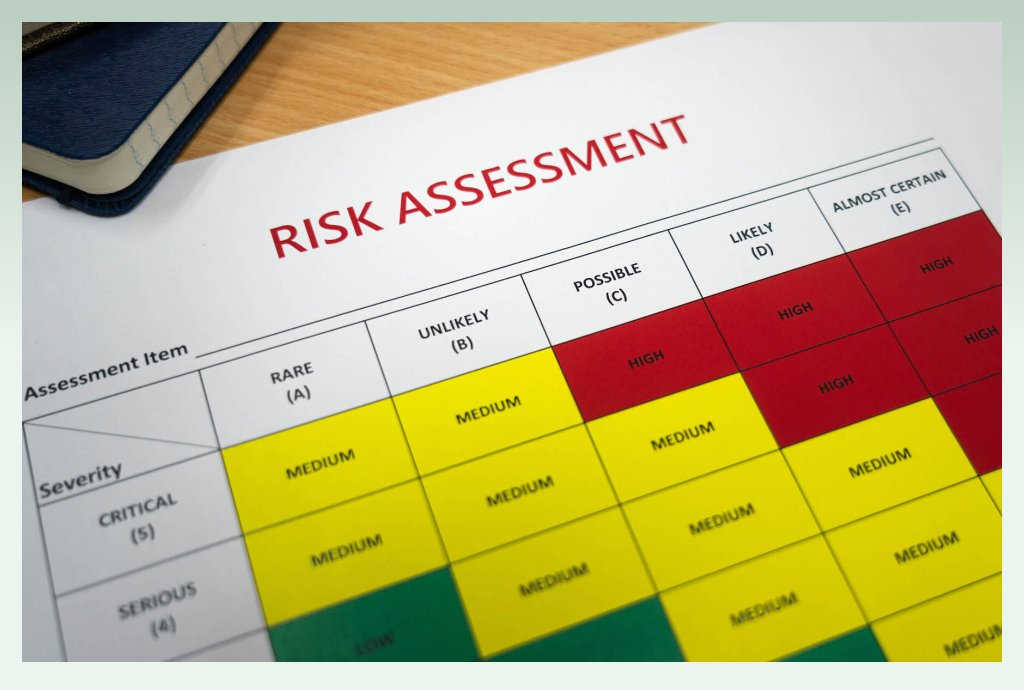Boutique Business Plan: Tips and Free template [2024]

To ensure the success of your boutique, you must first develop a comprehensive strategy. Writing a boutique business plan, whether you’re an aspiring, new, or seasoned entrepreneur, will encourage you to think strategically about your boutique’s market position. This will enable you to make decisions that help your brand thrive.
Let’s find out how to start a boutique business plan that drives you to success.
Contents
- 1. What’s a boutique business plan?
- 2. Why is a clothing boutique business plan necessary?
- 3. An effective Boutique Business Plan: 15 Sections to include
- 3.1. Executive summary
- 3.2 Business overview
- 3.3. Business structure
- 3.4. Product line, service, pricing
- 3.5. Competitor and market analysis
- 3.6. SWOT analysis
- 3.7. Target audience
- 3.8. Design and branding
- 3.9. Location
- 3.10. Clothing marketing strategy
- 3.11. Financial plan
- 3.12. Operational plan
- 3.13. Growth forecast
- 3.14. Risk analysis
- 3.15. Appendices
- 4. Clothing store boutique business plan template
- 4.1. Executive summary
- 4.2. Business description and mission statement
- 4.3. Business structure
- 4.4. Products, services and pricing
- 4.5. Competitor and market analysis
- 4.6. SWOT analysis
- 4.7. Target audience
- 4.8. Design and branding
- 4.9. Location
- 4.10. Clothing marketing strategies
- 4.11. Cost and funding
- 4.12. Operational plan
- 4.13. Growth forecast
- 4.14. Risk analysis
- 4.15. Appendices
- 5. Top Tips for Crafting Your Boutique Business Plan
- 6. Conclusion
- 7. FAQ
1. What’s a boutique business plan?
A boutique business plan is a comprehensive document that outlines the strategies, goals, and daily tasks of a boutique business to ensure success in the fast-paced retail sector. A comprehensive clothing line business plan for a clothing boutique encompasses thorough market analysis, astute competitive intelligence, accurate financial forecasts, and effective sales techniques. With a well-crafted plan, businesses can better understand their target audience, stand out from competitors and navigate the highly competitive market with ease.
2. Why is a clothing boutique business plan necessary?
A clothing boutique business plan determines the viability of the business by analyzing market potential and profitability. It provides insights into your niche, customers, opportunities, and threats, preventing premature decisions and potential losses. Each store requires a unique approach, such as a boutique store versus an electronic business or a second-hand clothing store. The plan improves operational clarity and focus and aligns sustainable growth strategies. Without it, maintaining a consistent strategy becomes difficult.

The offline and online boutique business plan acts as a roadmap for your company, guiding decisions and ensuring progress. In addition, it helps to secure the right employees by identifying the necessary competencies. When hiring, you can define specific requirements and effectively fill essential positions. Use your business plan as a valuable tool to navigate the competitive clothing industry and achieve success.
Relevant reading: Before you start your business plan, first, decide what kind of boutique business and products you want. If you’re not sure, take a look at our list of 30+ Profitable Boutique Business Ideas for 2024 for some ideas.
3. An effective Boutique Business Plan: 15 Sections to include
3.1. Executive summary
The executive summary is the gateway to your clothing line business plan, providing a snapshot of your entire venture. Crafted after the completion of your comprehensive business plan, it serves as a compelling introduction to captivate your audience. Let’s explore the key elements to include in your summary:
Unveil your vision
It is a great way to start your executive summary by unveiling the inspiration behind your clothing store and highlighting its unique proposition. Make sure that you will paint a vivid picture of how your business will revolutionize the industry and stand out from the competition.
Seize the market opportunity
The target market of the clothing business will be concisely elucidated, encompassing their demographics, geographic location, and psychographic attributes. A comprehensive understanding of their needs and aspirations will be showcased, along with an explanation of how the clothing business is ideally positioned to cater to them. Furthermore, a clear definition of the specific market segment that the business will serve will be provided.
Showcase your product
Give a brief outline of the excellent items or services that your clothes business can offer. It is crucial to highlight and emphasize the unique selling point and detail the activities to ensure client satisfaction, including sales, marketing, and customer services.
Introduce your team
A boutique business cannot succeed without talented and suitable team members. Introduce the key members of your management team, highlighting their roles, responsibilities, and impressive qualifications. Additionally, showcase their expertise and demonstrate how their collective skills will drive the success of your clothing store. By understanding the strengths of your team, you can assign them to appropriate roles, help them develop their careers, and foster the growth of your business and their talents.

Financial highlights
Having a detailed financial plan is a must before starting a clothing business if you want to avoid mistakes and ensure that your boutique business plan becomes a reality. Outlining the capital or investment requirements, startup costs, projected revenues, and anticipated profits can give you a comprehensive view of the financial landscape. This summary aims to paint a compelling financial picture that showcases the potential returns on investment, providing you with a clear understanding of the profitability and growth potential of your store.
Remember, brevity and clarity are key in your executive summary. Use simple language that resonates with your audience and avoid industry jargon. Craft a summary that leaves a lasting impression and compels your readers to delve deeper into your business plan.
3.2 Business overview
Depending on your business’s details, you’ll need different elements in your business overview. There are some foundational elements when you thinking about how to write a business plan for a boutique:
Business description: Provide the business information, including the name and type of your business, products, and services, and your target audience
Company structure: Describe and owner’s respective roles in running it and the ownership structure of your business whether it is a sole proprietorship, partnership firm, or something else
Mission statement: Summarize your clothing business’s objectives and core principles in a memorable, clear, and brief mission statement. This statement should reflect the essence of your business and what sets it apart from others in the industry.
Business story & history: Show any notable achievements or recognitions that your business has received for its exceptional services. Adding personality and intriguing details can make this section more engaging.
Future goals: Share your future goals that express your ambition and long-term commitment to achieving success.
3.3. Business structure
There are several business structures to choose from, including sole proprietorship, partnership, limited liability company (LLC), or corporation. Considering the disadvantages and advantages of each structure, you can choose an appropriate one that fits your specific business goals and needs.
Remember, it is crucial to consult with legal and financial professionals to ensure you make the right choice for your boutique’s structure. They can provide valuable guidance specific to your circumstances and help you navigate the legal and regulatory requirements associated with your chosen structure.
3.4. Product line, service, pricing
Product line
The product line of a boutique is a crucial element that sets it apart from other retail establishments. A successful boutique carefully curates its offerings, selecting high-quality merchandise that aligns with the target market’s preferences and reflects the latest fashion trends. From clothing and accessories to beauty products and home decor, the product line should encompass a diverse range of items that cater to various customer tastes and occasions.

Services offered
The services provided by a boutique greatly contribute to its success. Because personalized customer service is paramount in creating a unique and memorable shopping experience. Knowledgeable sales associates should be trained to offer individualized assistance, providing style advice, size guidance, and recommendations to customers. Going beyond transactional interactions, the boutique should focus on building long-term relationships with customers, offering ongoing support and tailored services that meet their specific needs.
Pricing
Pricing plays a significant role in the boutique business because it can directly affect customers’ purchasing decisions. Before determining the price for your products, you need to research the market and analyze competitive pricing that reflects the value of the products offered. Factors such as production costs, overhead expenses, and customer demand should be considered when establishing a pricing strategy. It is important to ensure that the pricing aligns with the boutique’s positioning in the market while providing customers with a fair value proposition.
3.5. Competitor and market analysis
To create a winning business plan for your boutique, it’s essential to dive deep into competitor analysis and thoroughly explore the market. By doing so, boutique owners gain a comprehensive understanding of the industry landscape, giving you the upper hand. Begin by identifying both direct and indirect competitors, and carefully assessing their strengths, weaknesses, and market positioning.
By delving into market trends, consumer preferences, and purchasing behaviors, you can unearth hidden opportunities and obstacles. This thorough examination of the competitive landscape and market dynamics will empower you to enhance your boutique’s offerings and stand out from the crowd. With a comprehensive understanding of your competitors and the market, you can differentiate your boutique and customize your tactics to meet the demands of your ideal customers.
3.6. SWOT analysis
Conducting a comprehensive SWOT analysis is crucial for any business plan online boutique or offline clothing store. This analysis will delve into the internal strengths and weaknesses of your business, as well as external opportunities and threats. By understanding these factors, you can identify your unique selling points, core competencies, and areas that require improvement.
You can position your boutique for sustainable growth and gain a competitive advantage if you leverage your strengths and seize opportunities. Simultaneously, addressing weaknesses and mitigating threats will help you overcome obstacles and ensure long-term success.
3.7. Target audience
To effectively attract and retain customers, it is crucial to meticulously define your target audience, taking into account factors such as age, gender, lifestyle, preferences, and purchasing habits. With this information, you can create buyer personas and delve into their motivations, needs, and pain points. This deep understanding of your target audience helps you to customize your marketing strategies, product offerings, and customer experience.

To gain valuable insights into your target audience, it is essential to conduct and assess market research. By concentrating on the traits and preferences of your audience, you can improve your strategy and establish a profound connection that greatly influences your customers.
3.8. Design and branding
When it comes to your boutique’s design and branding strategy, it is crucial to consider every detail that will make your store stand out. From your logo to your color scheme, store layout, and overall aesthetic, each element should work together seamlessly to create an engaging brand identity.
It is not only important to make your boutique physically appealing, but it is also important to understand your target audience’s interests and align your design decisions with their preferences. By doing so, you can create an engaging brand image that attracts your customers.
3.9. Location
To choose the right location for your boutique, you need to consider factors, including traffic, visibility, accessibility, and the target market’s demographics. Conducting market research and analyzing the competition in potential locations can help you choose the right location for your physical boutique store.
Besides a physical store, you can consider creating an online store that helps you access the potential of eCommerce and expand your customer base beyond geographical boundaries. Investing in a user-friendly website, secure payment gateways, and effective digital marketing strategies is a must you have to do to drive traffic to your online store.
By strategically selecting a suitable physical location and establishing a strong online presence, you can optimize the visibility and revenue potential of your boutique in both local and global markets.
3.10. Clothing marketing strategy
Having comprehensive marketing strategies can help you to attract and retain your customers. Here are some key elements to include in your marketing plan:
Determine and develop your unique selling proposition (USP): Clearly define the distinctive selling points of your business, which may encompass your products or services, brand reputation, unique designs, customizations, and more.
Pricing strategy: Create a pricing strategy that is both competitive and affordable, while also ensuring profitability. Consider implementing promotions, discounts, or package deals for your clothing business to attract new customers.
Marketing strategy: Develop a marketing strategy for appropriate online and offline channels. Take into account social media, email marketing, content marketing, brochures, print advertising, and events. Additionally, devise promotional activities such as customer loyalty programs and seasonal discounts.
Customer retention: Outline how your business intends to retain customers and foster loyalty, such as through loyalty programs, special events, or personalized service.
3.11. Financial plan

When planning the financial strategy for your business, it is important to provide a detailed overview of your financial projections for the initial years. This includes a profit and loss statement, cash flow statement, projected balance sheet, break-even point, and financing needs. By including these essential components, you will have a clear understanding of your business’s financial status, enabling you to make informed decisions for the future.
3.12. Operational plan
It is critical to examine the numerous parts of your business processes and procedures while constructing the operations strategy section. Here are the components that you need to include:
Hiring plan: Specify the staffing requirements, including the number of employees, qualifications, and responsibilities. Highlight the benefits and incentives provided to your employees.
Operational processes: Provide an overview of the processes and procedures for managing your clothing business. This includes inventory management, sales and marketing strategies, customer service protocols, and financial management practices.
Software & Technology: Detail the software and technologies used in your operations, tailored to your specific services. This may include a point-of-sale (POS) system, accounting software, optional e-commerce platforms, and tailoring equipment.
3.13. Growth forecast
When envisioning the future growth of your boutique, it is crucial to analyze market trends, customer demand, annual revenue, profitability, and financial indicators. With this information, you can assess potential expansion opportunities and determine whether to expand your boutique business. Afterward, consider your business resources, financial statements, and future goals to choose appropriate expansion strategies, such as forming strategic partnerships with other brands, expanding physical stores, or creating an online store on e-commerce platforms.
To ensure the success of your expansion strategy, business owners need to create a detailed timeline for each growth initiative and outline the essential resources and strategies required to achieve your expansion goals. By aligning your plans with the ever-changing market dynamics and customer preferences, you can position your boutique for remarkable success in the evolving retail landscape.
3.14. Risk analysis
To ensure the success of your boutique, it’s crucial to be aware of the potential risks and challenges that may come your way. These can range from ever-changing market trends and economic fluctuations to fierce competition and disruptions in the supply chain.

One way to avoid these risks is by diversifying your product offerings. By offering a wide range of unique and appealing products, you can adapt to shifting market trends and cater to a larger customer base. Additionally, establishing robust reliable supplier relationships is essential to ensure a steady flow of inventory, even in times of supply chain disruptions.
Not only that, implementing effective marketing and customer retention strategies is equally important. By continuously engaging with your customers and offering exceptional service, you can build a loyal customer base that will support your boutique business.
3.15. Appendices
Your boutique business plan should include legal documents such as supplier contracts, leasing agreements, market research studies, and the resumes of key team members. These additional documents provide valuable insights into the market, competitors, and industry. Besides, they highlight the qualifications and experience of your management team, ensure legal compliance, build trust with lenders and investors, and demonstrate that you have identified an appropriate site and cultivated a supplier network. Including these documents in your business plan will greatly enhance its credibility and strength, ultimately improving its overall credibility.
4. Clothing store boutique business plan template
To answer the question: How does a clothing boutique business plan look like, we give you a detailed actual plan template for a clothing business below.
4.1. Executive summary
The executive summary is a condensed version of your business plan. It is usually placed at the start of the plan, but it is recommended to write it last in order to capture the most accurate information from the other sections.
- Business name
- Founders and executive team
- Products and services
- Target demographic
- Marketing strategies
- Future plans and goals.
4.2. Business description and mission statement
It should be clear in your goal statement why you founded the company and what makes it unique. Your company’s identity is shaped by its values, which also direct decision-making. Setting vital values first will result in growth and success.
- Mission statement
- Core values
4.3. Business structure
Your company’s structure will significantly affect how it is operated and taxed. Describe your hiring positions, your organizational hierarchy, and your plans for the organization.
- Legal structure
- Business leaders
- Hiring plans
4.4. Products, services and pricing
Outline the goods, services, and benefits of your boutique business. Include the sorts of products you want to sell, any extra services you plan to offer, such as tailoring or garment rentals, as well as the cost and projected selling price of each item. Also, explain how you intend to develop or get your inventory, whether through suppliers or current relationships.
- Description of each product and service
- Pricing strategy
- Supply chain details
4.5. Competitor and market analysis
Make sure you conduct a competitive analysis to see which demands are being satisfied and where the market is lacking. Describe your unique selling proposition and how it differentiates you from the competitors.
- Competitor analysis
- Industry trends
4.6. SWOT analysis
A SWOT analysis (strengths, weaknesses, opportunities, and threats) completes exactly what it sounds like it does. Consider your company’s most significant strengths and possibilities. On the other hand, is there anything that might endanger your success?
- Strengths
- Weaknesses
- Opportunities
- Threats
4.7. Target audience
To make sure that you can reach and attract customers, you have to define your ideal customers and create a persona. Write down the information relating to their demographic,
- Demographic & Traits
- Behaviors
- Customer demands
- Plan to serve and fulfill these needs through your store
4.8. Design and branding
The branding and design of your store play an important role in attracting and impressing customers. When building brand guidelines and designing the concept of your store, you need to consider several elements:
- The meaning of your brand
- Brand standards in design and marketing
- Store concept
- Store layout
4.9. Location
Explain why you chose this location for your store and identify any competitors in the area that you need to be aware of:
- Address
- Weekly and monthly foot traffic
- Competitors in your area
4.10. Clothing marketing strategies
This section will explain to investors and your team how you attract customers and increase the conversion rate.
- Marketing channels you use
- Plans for paid vs. organic marketing
- Loyalty program
- Marketing goals
4.11. Cost and funding
Here is where you’ll create a list of the things you must purchase and how much cash you’ll need to ensure you have everything you need.
- The cost for lease, security deposit, furniture and façade costs, initial inventory, technology hardware, credit card readers, website design costs, grand opening costs
- Profit and loss statement
- Cash flow
- Balance sheet
4.12. Operational plan
With an appropriate operational plan, you can manage your business and avoid the risk in the future. Create a plan to manage human resources, daily tasks, inventory processes, and facilities in your store.
- Hiring plan
- Operational process
- Inventory process
- Facilities
4.13. Growth forecast
Include your starting assets and the amount of inventory you plan to start within this area. Estimate the amount of money you’ll need for your grand opening.
- Assets
- Cash on hand
- Revenue
- Other growth plans or predictions
4.14. Risk analysis
This section of your boutique business has to show the potential risks and proactive measures in place to navigate them.
- Potential risks
- Strategies and contingency plans to mitigate these risks
4.15. Appendices
After creating a business plan for a clothing boutique, you have to list any additional documents or information that support your business plan.
- Market research reports
- Resumes of key team members
- Legal documents
- Lease agreements
- Supplier contracts
5. Top Tips for Crafting Your Boutique Business Plan
To guide you through the complicated process, we have compiled four key tips that will help you create an effective offline and online boutique business plan:
5.1. Develop a unique value proposition (UVP)
The boutique’s unique value proposition will guide you in building up a comprehensive plan. It is better to start by identifying what makes your boutique special and differentiates it from competitors, highlighting the unique features, products, or services that will attract customers and providing compelling reasons for them to choose your boutique over others.
5.2. Apply financial realism
Show potential investors or lenders the true potential of your boutique by presenting them with realistic and well-supported financial projections. By conducting thorough market research and analyzing costs and revenue streams, you can provide a detailed financial plan that showcases the feasibility and profitability of your business. This will not only help them understand the financial viability of your boutique but also the potential returns they can expect.
5.3. Understand target market
Having a deep understanding of your target market will help you create the right product and marketing strategies. Before finding out how to create a business plan for a boutique, you have to research and analyze customer demographics, preferences, and industry trends. With this information, you can find out how your boutique will meet the needs and desires of your target customers and offer compelling solutions that resonate with their preferences.
5.4. Build a strong team
To ensure the seamless operation and sustainable growth of your business, it is crucial to have a deep understanding of the unique strengths, weaknesses, skills, and aspirations of each team member, and strategically position them accordingly. Moreover, you have to prioritize their interests, provide motivation, and foster a collaborative environment where all teams are united in their efforts to drive the business forward.
5.5. Ensure conciseness and clarity
When presenting your business plan online boutique or offline clothing store, you have to ensure clarity and conciseness. To enhance readability, it is recommended to use a logical structure, incorporate headings, and utilize bullet points. By doing so, you can effectively communicate your ideas and make the content more accessible to all readers, including potential investors. And don’t forget to avoid using jargon and ensure that your business plan is easily understandable to a wide audience.
6. Conclusion
Creating a boutique business plan that truly stands out is crucial if you want to build up a thriving and enduring clothing brand. This comprehensive guide will walk you through each and every step, ensuring that your boutique business plan encompasses all the vital components, ranging from defining the ideal customers, planning for finance and marketing strategy to forecasting growth, and analyzing potential risks. A well-crafted business plan is a guide for the success of your boutique, demonstrating your professionalism and unwavering commitment to potential investors, partners, or lenders. With a solid business plan in hand, you can confidently embark on your boutique venture and passionately pursue your dreams in the captivating fashion industry.
7. FAQ
Creating an effective boutique business plan is crucial for the success of your business. Here are 15 steps to follow when creating your boutique business plan:
1. Executive summary
2. Business overview
3. Business structure
4. Product line, service, pricing
5. Competitor and market analysis
6. SWOT analysis
7. Target audience
8. Design and branding
9. Location
10. Marketing strategy
11. Financial plan
12. Operational plan
13. Growth forecast
14. Risk analysis
15. Appendices
By following these 15 steps, you can create a comprehensive and well-structured boutique business plan that covers all the essential aspects needed for success.
Follow these steps to craft a compelling USP:
Understand your target market: Learn about your ideal customers’ needs, preferences, and pain points to tailor your USP to resonate with them.
Analyze the competition: Research your competitors to identify gaps in the market that you can fill with your unique approach or offerings.
Define your unique value: Determine what makes your boutique special, such as your product selection, quality, personalized service, unique designs, or sustainability practices.
Highlight benefits: Emphasize the benefits and value that customers will gain by choosing your boutique, such as enhanced experiences and problem-solving.
Create a concise message: Summarize your USP into a clear and memorable statement that communicates the unique benefits of your boutique.
Remember to continually evaluate and refine your USP to stay relevant and meaningful to your target audience.
Remember to continually evaluate and refine your USP to stay relevant and meaningful to your target audience.
Market research is crucial for your boutique business plan as it offers valuable information about your target market, customer preferences, competitors, and industry trends. It helps you comprehend the demand for your products or services, identify potential customers, and create effective marketing strategies. Additionally, it enables you to evaluate the feasibility and profitability of your boutique concept. Through comprehensive market research, you can make informed decisions, mitigate risks, and enhance the likelihood of success for your boutique business.
Boutiques often encounter difficulties like tough competition, shifting fashion trends, managing inventory, and attracting and keeping customers. To tackle these challenges, your plan should include strategies to set your boutique apart from competitors, stay informed about fashion trends, use efficient inventory management systems, and create marketing and customer retention initiatives.
You should also consider factors like pricing strategies, optimizing the boutique layout, offering exceptional customer service, and using digital marketing channels. Demonstrating a thorough understanding of these challenges and presenting practical solutions in your plan will show that you are prepared and increase your chances of overcoming these obstacles successfully.
Your financial plan should include projected revenue and sales forecasts, expected expenses (such as inventory, rent, utilities, and marketing), start-up costs, and funding needs. Additionally, it should have a break-even analysis, cash flow projections, and a profit and loss statement to provide investors and your team with a clear understanding of your business’s financial performance in each period. Demonstrating a strong understanding of the financial aspects will impress potential investors or lenders and help you make informed decisions regarding pricing, budgeting, and resource allocation.








